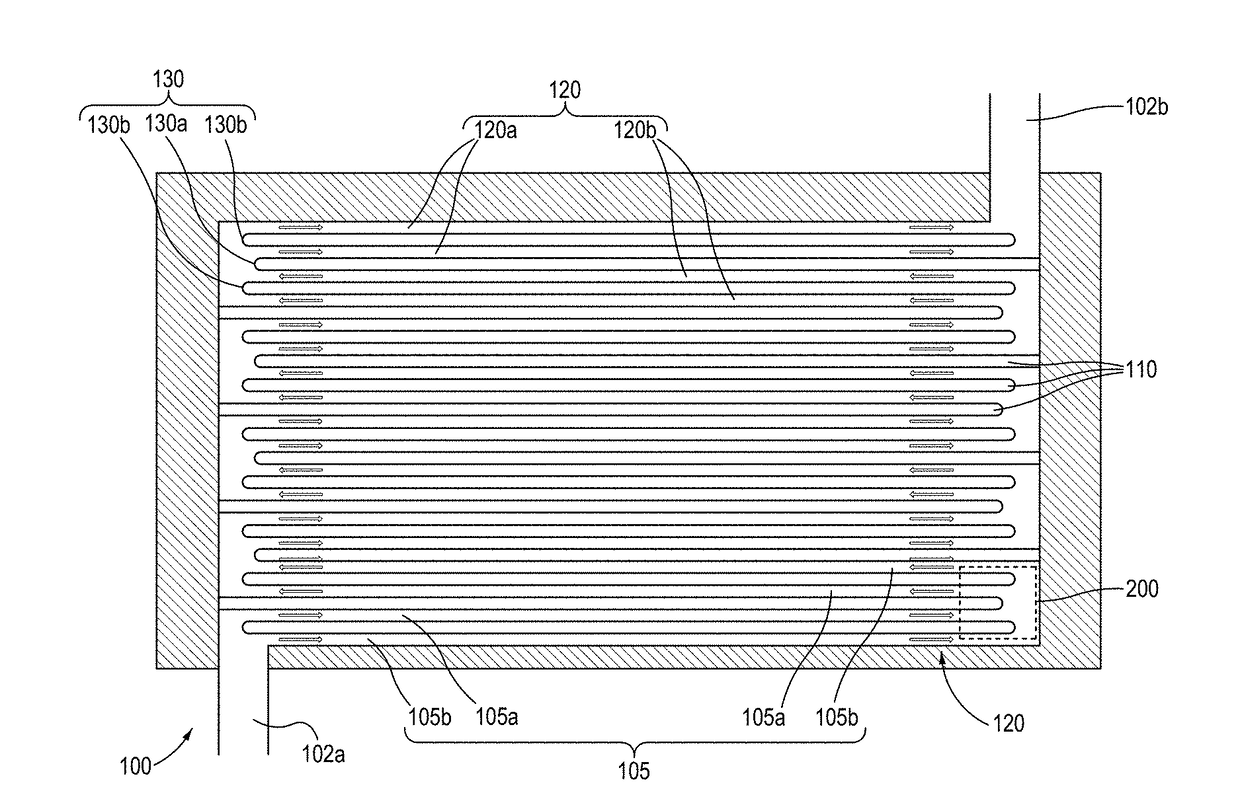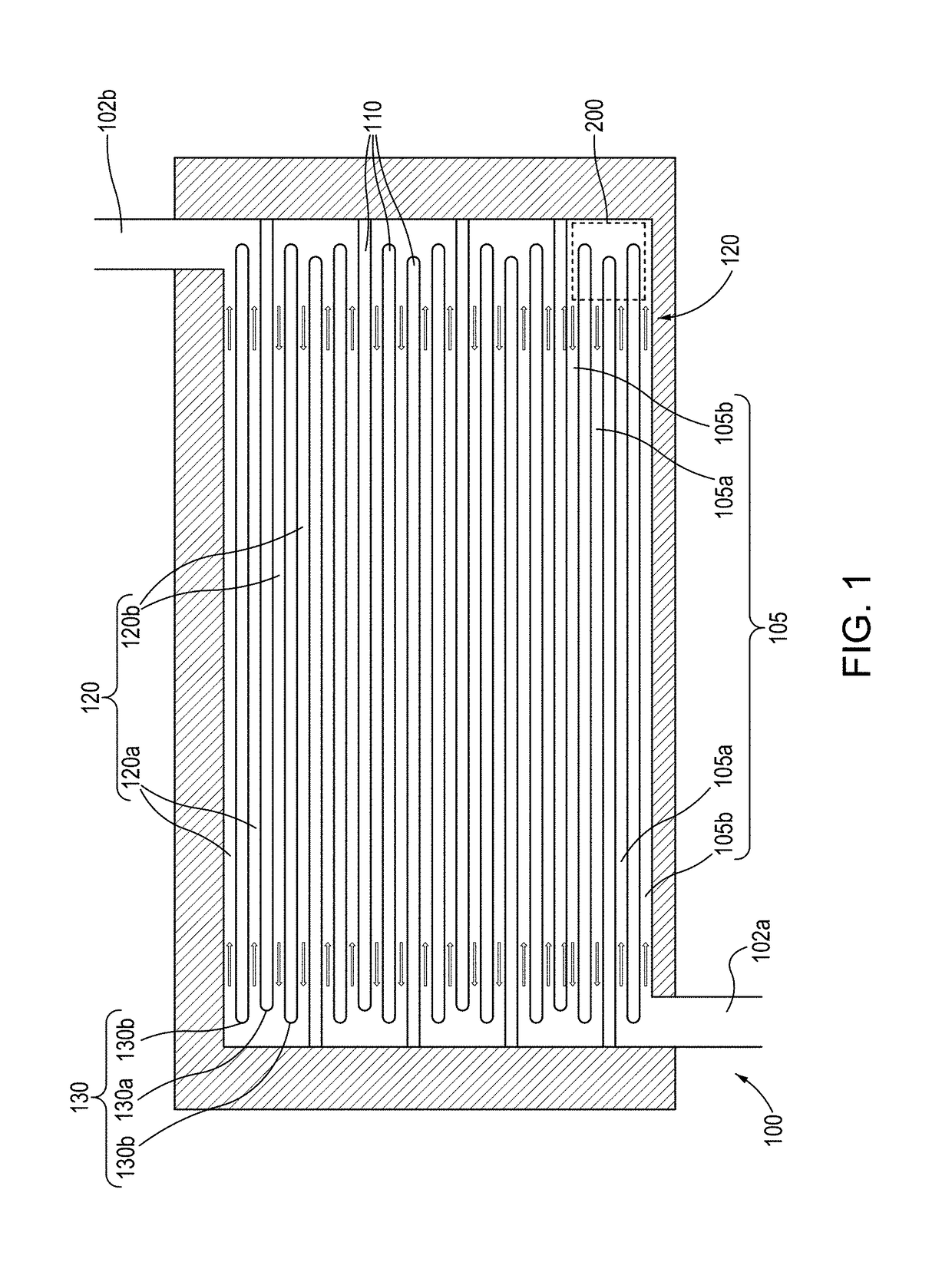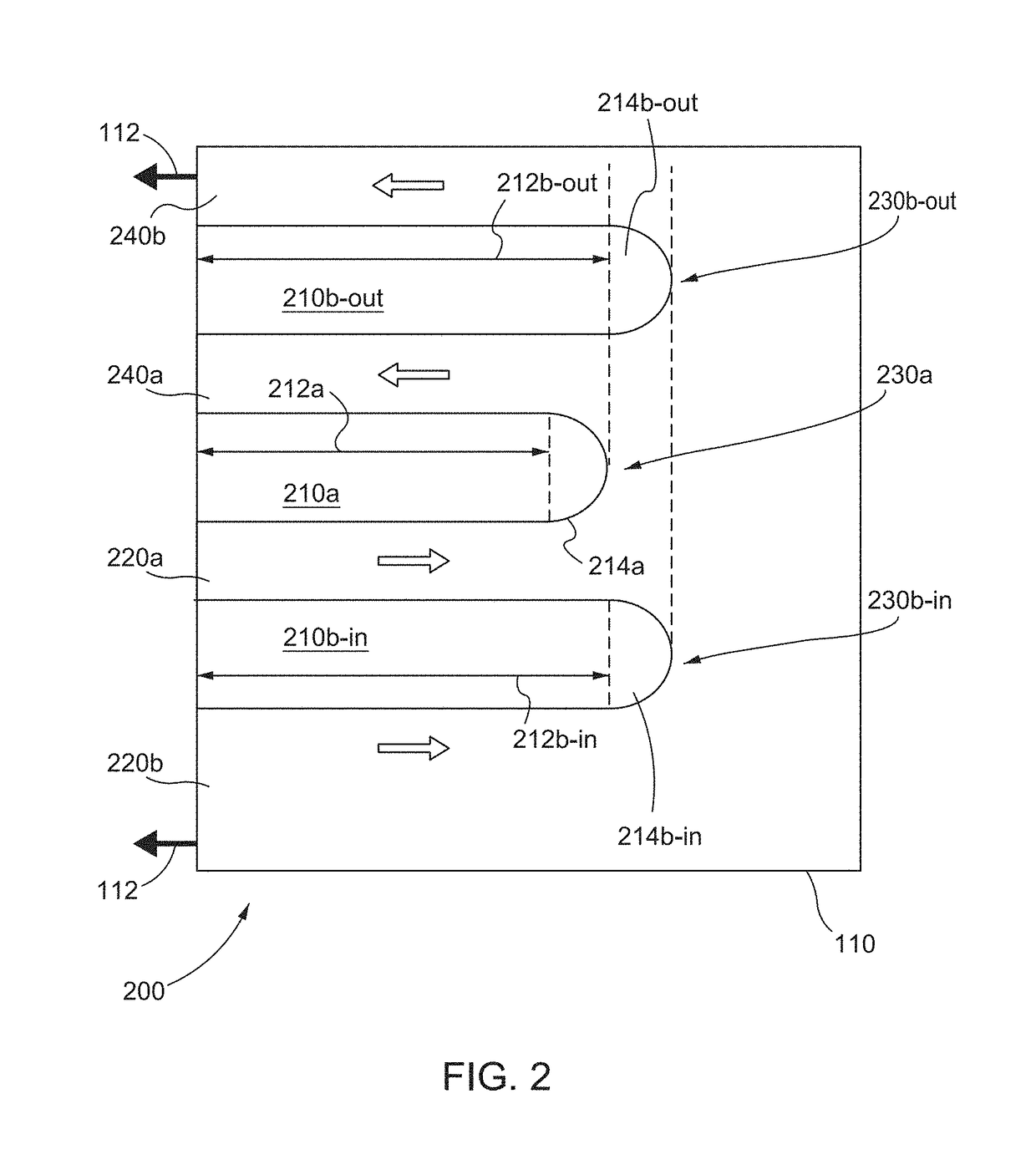Superconducting nanowire avalanche photodetectors with reduced current crowding
a nanowire and photodetector technology, applied in the direction of photometry using electric radiation detectors, optical radiation measurement, instruments, etc., can solve the problems of limiting the bias current at which the device can be operated, less-than-ideal snr, and the maximum snr achieved to date remains below the theoretical value, so as to achieve lower current crowding and achieve higher achievable signal-to-noise ratios
- Summary
- Abstract
- Description
- Claims
- Application Information
AI Technical Summary
Benefits of technology
Problems solved by technology
Method used
Image
Examples
Embodiment Construction
[0020]Current crowding occurs in nanowires (e.g., at bends and junctions) when the current density increases in magnitude. For example, the current density—which may be uniform in a straight section of the nanowire—may increase in magnitude near a bend or intersection in the nanowire. The increased current density acts as a weak point for the breakdown of superconductivity, either through the entry of vortices or the formation of a hotspot. Current crowding decreases the overall SNAP switching current (i.e., the current at which the SNAP witches from a superconducting state to a resistive state). For a SNAP, this decrease in switching current can reduce the SNAP's dynamic range and / or achievable signal-to-noise ratio (SNR).
[0021]Current crowding can also degrade a SNAP's sensitivity, e.g., by constraining the ability to bias the SNAP at higher switching currents. Operation at higher current is often desirable for applications where fine timing resolution is desired—the higher the bi...
PUM
| Property | Measurement | Unit |
|---|---|---|
| width | aaaaa | aaaaa |
| avalanche current | aaaaa | aaaaa |
| avalanche current | aaaaa | aaaaa |
Abstract
Description
Claims
Application Information
 Login to View More
Login to View More - R&D
- Intellectual Property
- Life Sciences
- Materials
- Tech Scout
- Unparalleled Data Quality
- Higher Quality Content
- 60% Fewer Hallucinations
Browse by: Latest US Patents, China's latest patents, Technical Efficacy Thesaurus, Application Domain, Technology Topic, Popular Technical Reports.
© 2025 PatSnap. All rights reserved.Legal|Privacy policy|Modern Slavery Act Transparency Statement|Sitemap|About US| Contact US: help@patsnap.com



